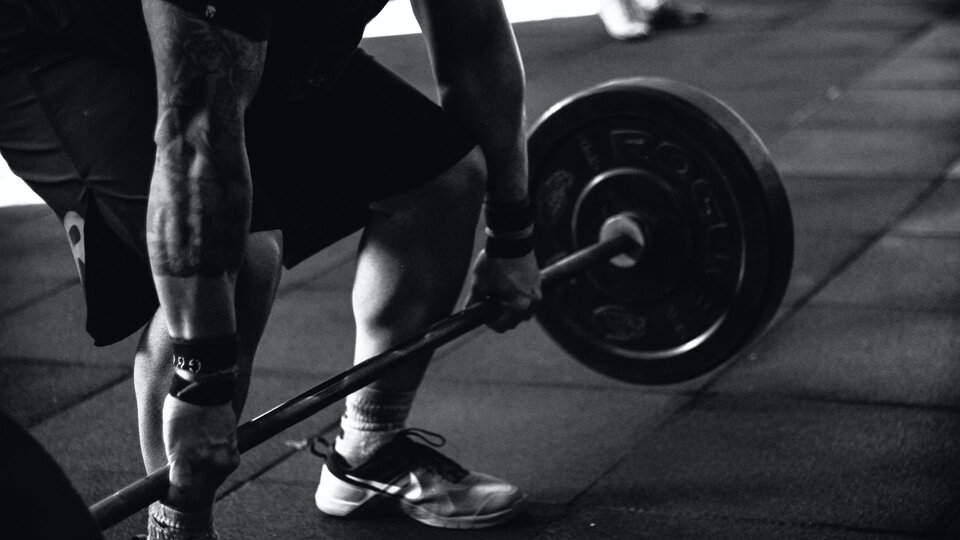Let’s talk about the deadlift. Today, we will learn the techniques and cues to help you master it. The deadlift is an exercise in the “hip hinge family,” a diverse, hip-dominant movement pattern (for example, hex deadlifts, kickstand deadlifts, RDLs, etc) that has its place in any program. This exercise is exceptional at building postural stability, hip extensor strength and hypertrophy.
The deadlift may seem simple, but there are valuable techniques that can carry over into the rest of your training program. While many deadlift variations exist, this article will focus on conventional barbell deadlift techniques. However, these techniques can still generally apply to other variations.
Let’s analyze how implementing these techniques will make your deadlift more confident and improve your whole body through stability and overall body awareness.
Set-Up
There are essential techniques on the kinetic chain to check off before lifting the bar. These aim to leverage mechanical advantage and increase stability from the feet to the head. Two of the biggest setup mistakes we see are not activating the feet and the lats. Missing out on these two points of activation dramatically reduces the strength potential. To begin:
-
Set up your feet hip to shoulder-width apart with the toes pointed forward (4)
- Similar to the squat, “grip or squeeze the floor with your feet” and “create a tripod.”
-
Position the middle of your feet under the bar
-
Create tension in your core by
-
“Pulling the slack out of the bar” or “Pulling the bar into your shins” (lat engagements)
-
Squeezing your abs and transverse abdominals around your core
-
-
The torso remains much less upright compared to the squat (3)
-
Neutral spine, including your head (not looking up)
- Practice hip hinging with a PVC pipe or dowel held along your spine with as much surface area in contact with your spine as possible (especially the low back)
Ascent and Descent
When one hears “ascent and descent,” it is fair to assume vertical movement is happening. This is true to some extent for the deadlift. However, focus on the horizontal movement of the hips rather than simply going up vertically. Focusing on hip horizontal movement optimizes the motor control of the movement, maximizing the engagement of the glutes and hamstrings.
-
Initiate the ascent by driving the hips forward followed by bending the knees (2)
-
Don’t just “grip and rip “pull the slack from the bar.”
-
Keep the bar very close to your legs (even touching your legs)
- This decreases hip and spinal moment arms (2)
-
Initiate and maintain movement with a neutral spine (1,5)
-
Maintain the knees in line with the feet (5)
-
Control the bar on the descent
-
Look into the Valsalva maneuver or similar breathing techniques for maximal intraabdominal pressure
A couple common mistakes are rounding the back and letting the knees move backwards on the descent.
Outro
From the initial setup to the subsequent descent and ascent, the importance of stability and horizontal hip drive cannot be overstated. As you implement these principles into your training, focus on the details from the ground up, from your foot activation and placement to the tension in your lats.
When using these techniques, lifters will avoid most mistakes, and the weight will move seamlessly. Optimizing stability throughout the movement makes the difference for maximal strength and joint longevity.
Now that your understanding of the deadlift technique has deepened, lift confidently!
Sources
-
Bengtsson V, Aasa U, Öhberg F, Berglund L. Thoracolumbar And Lumbopelvic Spinal Alignment During The Deadlift Exercise: A Comparison Between Men And Women. Int J Sports Phys Ther. 2022 Oct 2;17(6):1063-1074. doi: 10.26603/001c.37859. PMID: 36237649; PMCID: PMC9528690.
-
Bengtsson V, Berglund L, Aasa U. Narrative review of injuries in powerlifting with special reference to their association to the squat, bench press and deadlift. BMJ Open Sport Exerc Med. 2018 Jul 17;4(1):e000382. doi: 10.1136/bmjsem-2018-000382. PMID: 30057777; PMCID: PMC6059276.
-
Glassbrook, Daniel J.1; Brown, Scott R.1; Helms, Eric R.1; Duncan, Scott1; Storey, Adam G.1,2. The High-Bar and Low-Bar Back-Squats: A Biomechanical Analysis. Journal of Strength and Conditioning Research 33():p S1-S18, July 2019. | DOI: 10.1519/JSC.0000000000001836
-
Kompf J, Arandjelović O. The Sticking Point in the Bench Press, the Squat, and the Deadlift: Similarities and Differences, and Their Significance for Research and Practice. Sports Med. 2017 Apr;47(4):631-640. doi: 10.1007/s40279-016-0615-9. PMID: 27600146; PMCID: PMC5357260.
-
Sjöberg H, Aasa U, Rosengren M, Berglund L. Content Validity Index and Reliability of a New Protocol for Evaluation of Lifting Technique in the Powerlifting Squat and Deadlift. J Strength Cond Res. 2020 Sep;34(9):2528-2536. doi: 10.1519/JSC.0000000000002791. PMID: 30199449
